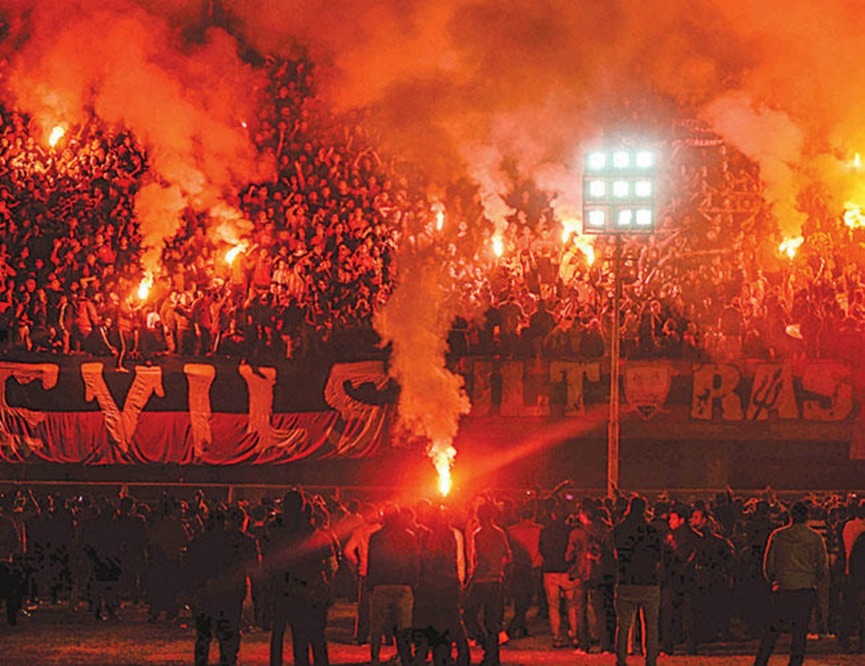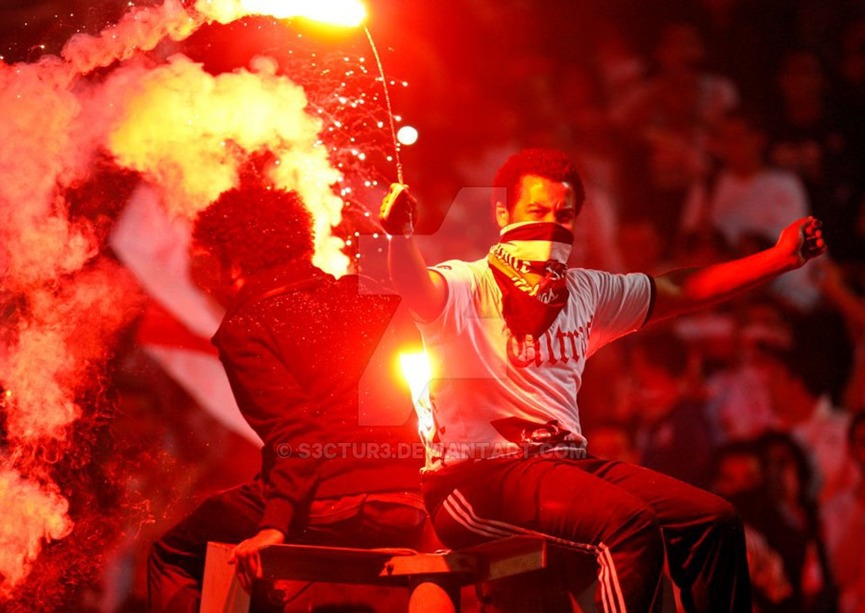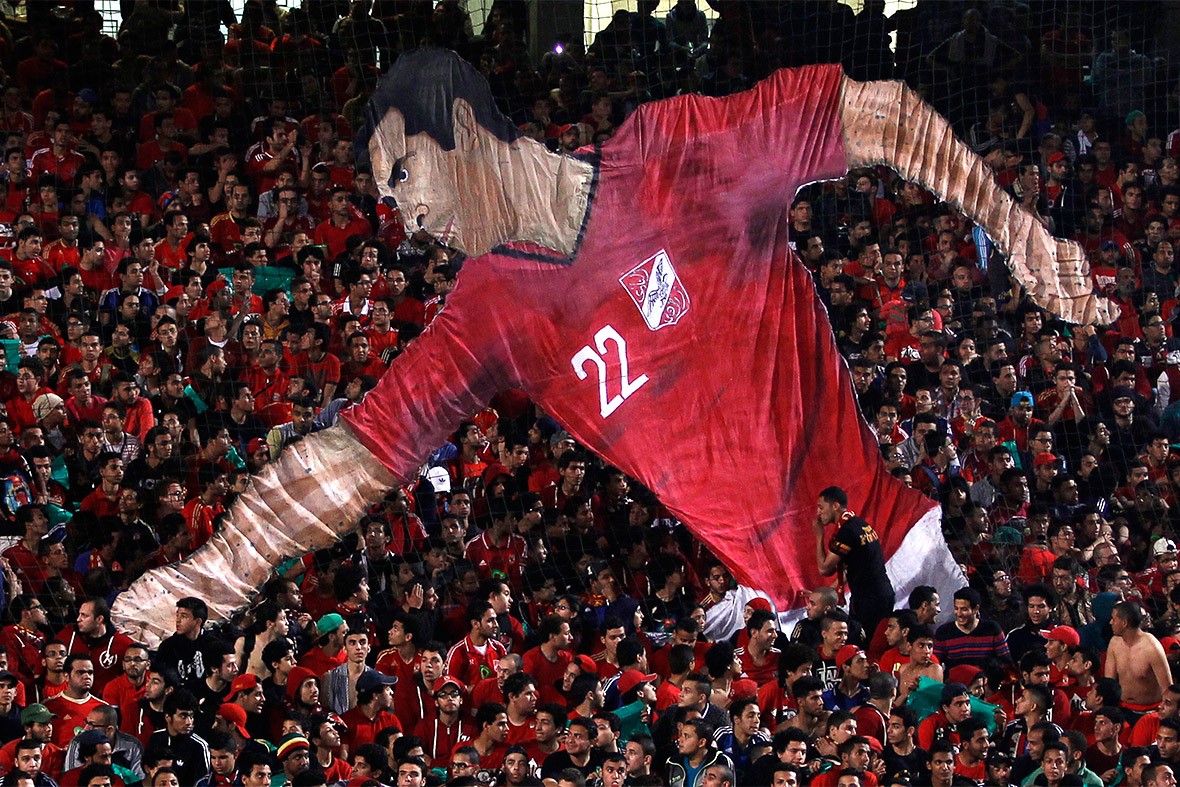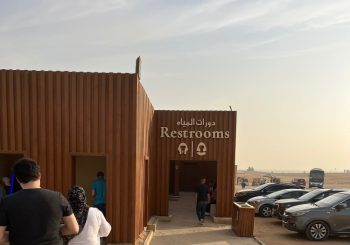As AFCON trudges on in Egypt, we had hoped for the best. We hoped for an exciting performance and the chance to lift the coveted cup on our home-ground. We hoped for a good audience and great cheers from the bleachers, reminiscing noteworthy matches from the past. We remember 2006 and all the years that followed when men like Mostafa Tabla led chants until their voices gave out. We remember the Ultras, the Super Fans who gave cheering a new identity.
Recently featured in Coca-Cola’s newest AFCON ad, the Ultras have made waves in the mainstream again. It is not like they haven’t been here before; they have been part of our football culture for more than a decade.
The Ultras, Globally and in Egypt
If Ultra movements were secret to Egypt until 2007, they have been one of the worst kept secrets on the planet. History tells us Ultras groups have been around longer than one might think. The Torcida Organizada and the Barra Bravas are notable examples that spread to Italy, where a movement not unlike the groups we see today developed.
The concept reached Africa a little later, beginning with the emergence of Morocco’s Ultras in 2005, though it is argued that small Ultra-like groups already existed before.
Egypt’s Ultras were founded about two years later and to find out more about the Egyptian Ultras culture that personally mystified me, I managed to sit down last February with an Ultra, who prefers to remain anonymous for security reasons. Given the Ultras history and links to security issues, this is completely understandable.
Egypt is a country obsessed with football and so naturally, the Ultras would also reach Egypt by the late 2000s, a little later compared to other North African countries.
According to our source, Egypt’s Ultras Groups were founded in 2007, first with the Ultras White Knights of Zamalek which were founded in March, followed by the Ultras Ahlawy in April, then the Yellow Dragons of Ismailia and so on.
Naturally, there have been a few disputes about which group came first, the UWK or Ultras Ahlawy, yet popular belief stands with the formation of the UWK as the first Ultras group in Egypt and the second in North Africa as a whole.

People in Egypt have a somewhat limited understanding of the Ultras mentality. Here, we understand passion and the love one can have for their club, yet none know the difference between an Ultra and a fan. Some might say it’s basically the same thing. We all love our clubs and we all both cheer them on and want them to bag the win. Nothing is that simple, though; it’s a different mentality. Every Ultra is a fan, but not every fan is an Ultra, even if some say they are.
Telling an Ultra and someone who says they’re an Ultra apart is ridiculously easy, mainly because the former would never announce themselves that way. In the eyes of the Ultras, those new, showy kids give off a bad taste by running around masquerading as one of their own. It is not that they are not welcome, it is the idea that they are in it for the reputation that is unpleasant.
“They go off telling everyone I’m an Ultra, but that’s not how it goes”, an anonymous member says. “It’s not authentic, but we’re letting them play around until we’re back”.
Other than their cheering styles, Ultras can be recognized by their work ethic. The sheer effort put into making the colorful banners of impressive sizes, the pyro shows that are made to be daunting; the chants that give us chills to this day would have been impossible, were the men behind not committed to giving it their all.
“I would say we’re the most creative in Africa”, our source says. “We could have been easily competing with the European groups in terms of displays within years.”

Releasing the (Creative) Kraken
Painting a banner and setting up pyro shows might seem easy to others. Some might even scoff at taking a few couplets here and there and forming an entire song. That all might sound easy but the work put into it certainly tells another story. These chants inspired lines like “ya t-shirt el ‘omr ya abyad” inspired by UWK martyr Omar Hussein’s tweet before his murder and “youm ma abatal ashagaa’ hakoon mayet akeed”, which none managed to shake off after the Port Said Massacre.
“We can spend quite a long time working on our banners and entrances”, the source says. “One time, I remember we stayed up all night, not sleeping a wink, because we had to finish this one banner by tomorrow’s game. I was exhausted but it was fun.”
It may seem redundant to write, but the Ultras are at their best when a game is to be played. The night before the game is like the day before Eid and Christmas Eve rolled into one and is simply too exciting for most.
“You’re never able to sleep”, a group member begins. “You’re just too excited and anticipating and calling up all your friends.”
The eve of a match is also important as everyone is finishing up their required chores. Those responsible for the entrances and displays have to perfect their craft, as do those responsible for the banners and pyro-shows.

If regular games feel like celebrations, then derbies take it to a whole another level.
The Cairo Derby—no matter how prevalent European football becomes and how unprofessional the local league is—remains the most anticipated game of the season in Egypt. Regular fans cannot wait and the Ultras even less so.
Club rivalries translate easily into Ultras groups, with groups on opposite ends of the spectrum going all out to outdo each other in terms of chants, cheering, banners, and displays. Sometimes, it even goes further, and banners are stolen—the ultimate sign of disrespect in Ultras circles. If your banner is stolen or, worse, burned by a rival or an opponent, it’s a direct show of disrespect and you have to come up with a way to get your dignity back.
“We did that once, actually”, our source slyly adds. “It was at a futsal game and we stole our rivals’ banners and ripped them apart. They told everyone the banner’s okay, that nothing happened, but we both know the truth.”
Ultras’ Representation in the Media
Surprisingly, derbies in other sports, like basketball and futsal, are just as fierce. Especially, since most of the viewers present used to be just Ultras, which meant it was a no-holds-barred, all-or-nothing type of situation, in which one side had to come out victorious and establish dominance over the other side.
A small but interesting detail is that there isn’t any security in futsal matches. Games are usually played in a closed hall with a meager audience compared to a stadium, yet the Ultras are always present and strangely hooligan acts never happen. Not one fight happens in a closed game with these supposedly “violent” youths.
Yet this is a fact you would not be are of, were you to base your knowledge on the media’s reports, condemning everyone who dares to join an Ultra group as hooligans.
The media narrative says that this ‘foreign’ culture has ruined the kids, yet it will never mention that this new foreign culture has remained this way because it has not been discussed.
No one stresses on the nights spent in the streets gathering paint and other items to create moving banners, nobody reports the hours spent on entrances alone.
Barely does anyone mention the distances traveled to follow the team: to Ismailia, to Port Said, or to other African countries. In some cases, this even involves walking to the stadium if transportation is unavailable or is mysteriously cut off.
“That’s the face of the ultras that’s supposed to be shown” argues one person. The face that could quell public fear over youths, the side that stresses on football because that’s what they’re all about.
The Boards Versus the Ultras
The media would have had you believe that the system is innocent and that the Ultras are devil-horned demons, though a simple prod shows otherwise.
All that the Ultras want are a right to speak their minds about club decisions, the way that normal fans do, and the hiring of professional security firms rather than police forces to maintain security. The club boards, however, want them quiet and want them to cheer in a more ‘respectable’ manner.
The Ultras absolutely do not agree with any of that, as they believe freedom of expression is a right. You cannot take the chanting, without the chanters—it just does not work like that.
Our Ultras are not the first group of their kind to face troubles with their club boards. PSG and Real Madrid’s Ultras have faced similar problems, both even being banned from attending their teams’ matches for a number of years.
In Egypt, the tug of war of control never stopped, though the clubs recognize the lack of spirit in their matches and tried to make up for it by hiring club members to form cheering groups. Those attempts never go far because real passion is priceless and cannot be replaced, no matter how controlled and ‘respectable’ these fans are.
The question that plagues everyone’s mind when thinking of the Ultras is if it is worth it. Is anything worth the trouble and the awful stereotypes and the heartaches we’re all familiar with?
To them, the answer is clear as day and doesn’t need spelling out.
The club is worth it and worth the sweat, blood, and tears. The club is worth the distances traveled, items sold for a ticket, and messages automatically deleted as though you were a spy on the run. No one can ever deny the effect they had on Egyptian football and culture. Without them, would we have ever known true cheering?






Comments (2)
[…] of attendees, the system nonetheless aimed at ensuring the absence of potentially rowdy fans and Ultras for security […]
[…] Ain’t No Mountain High Enough: An Exploration of the Ultras Culture in Egypt […]